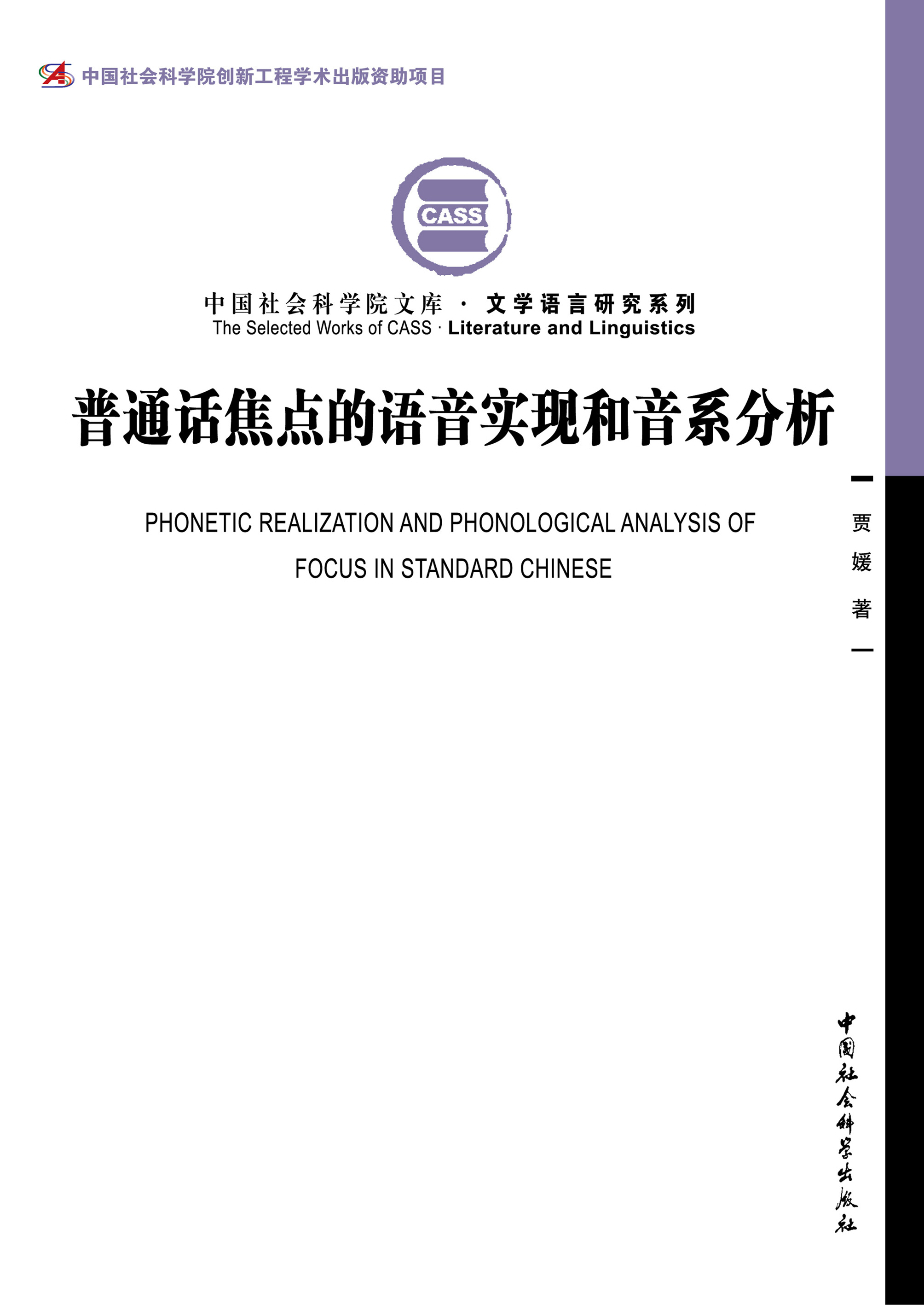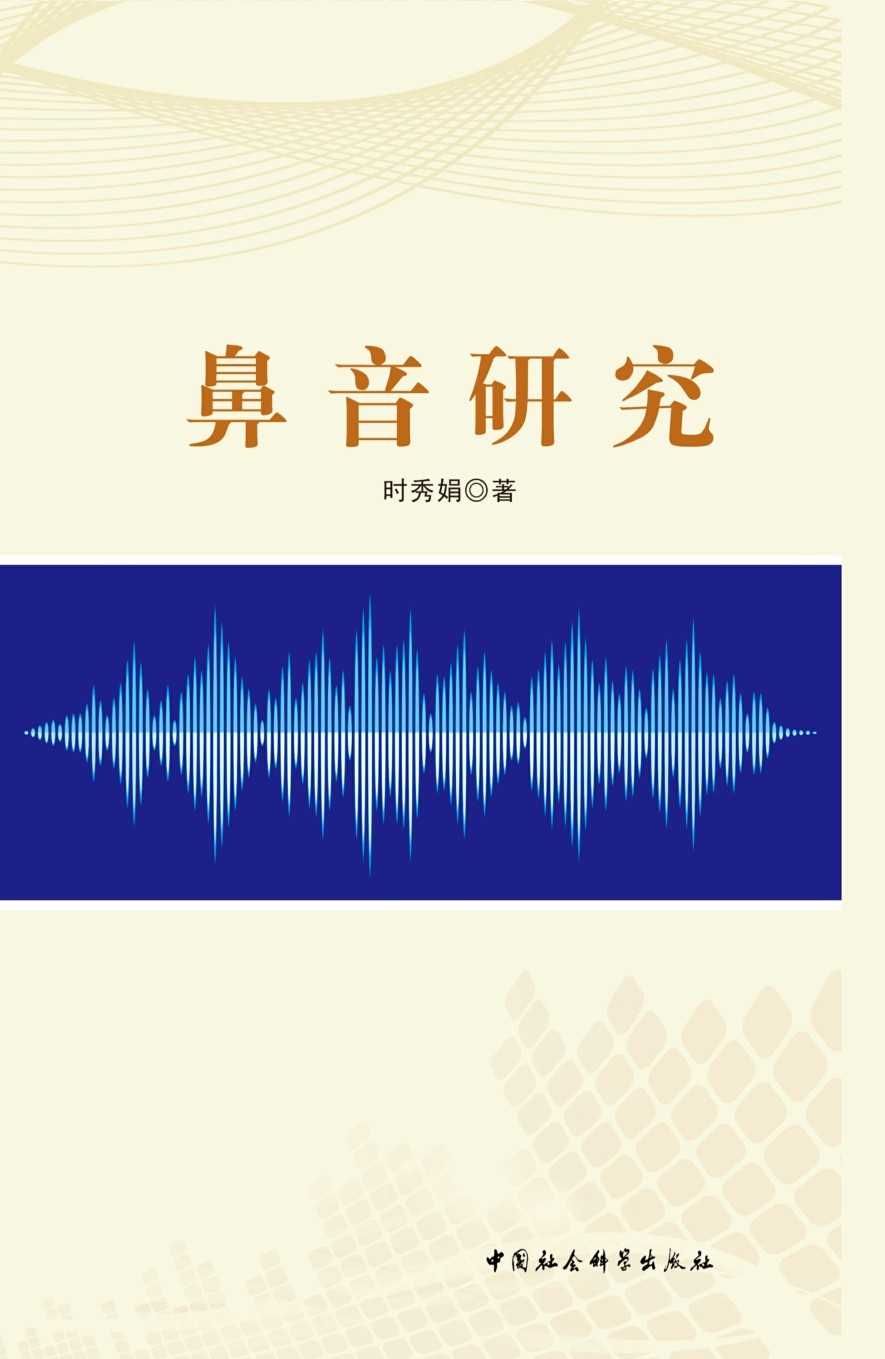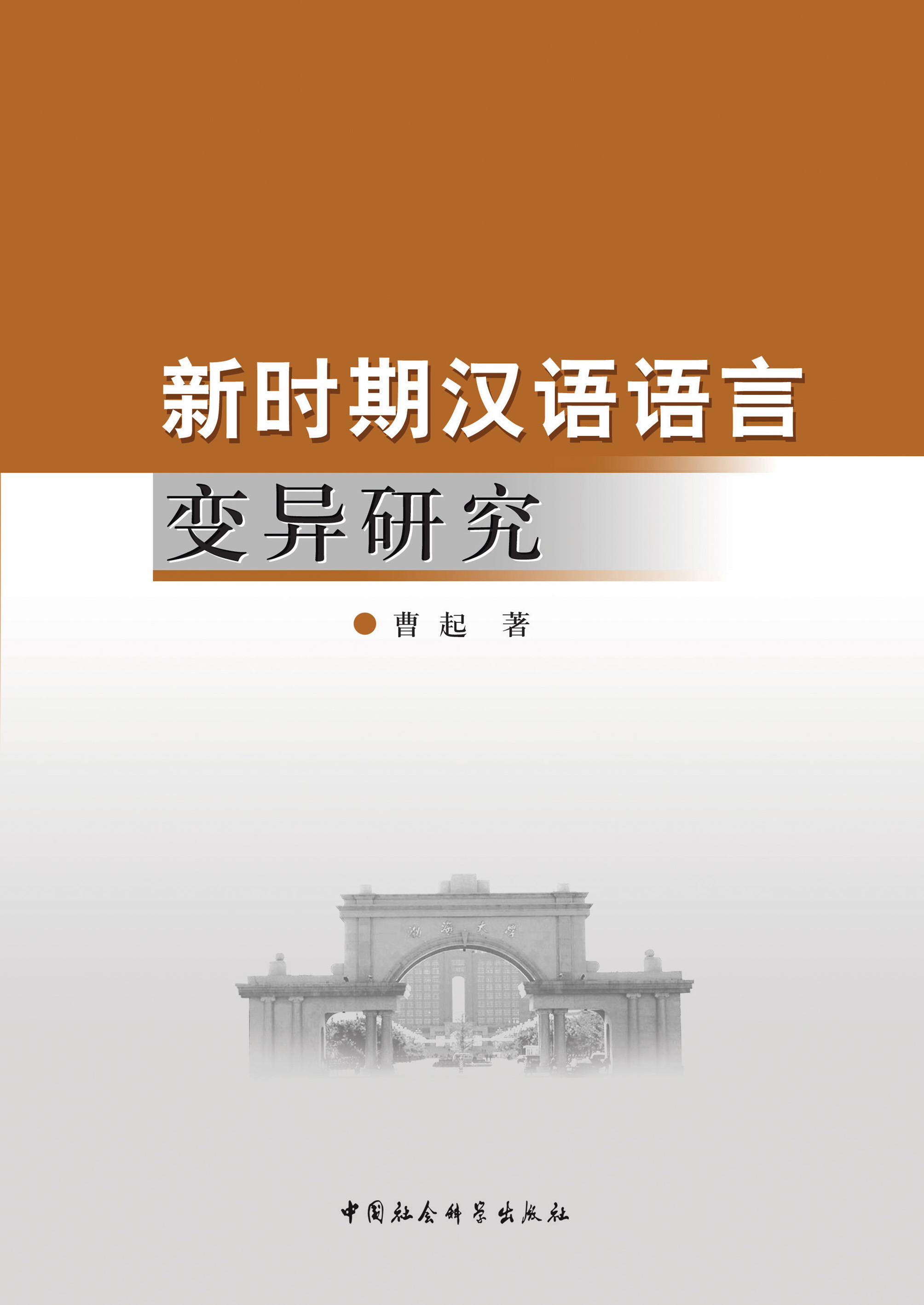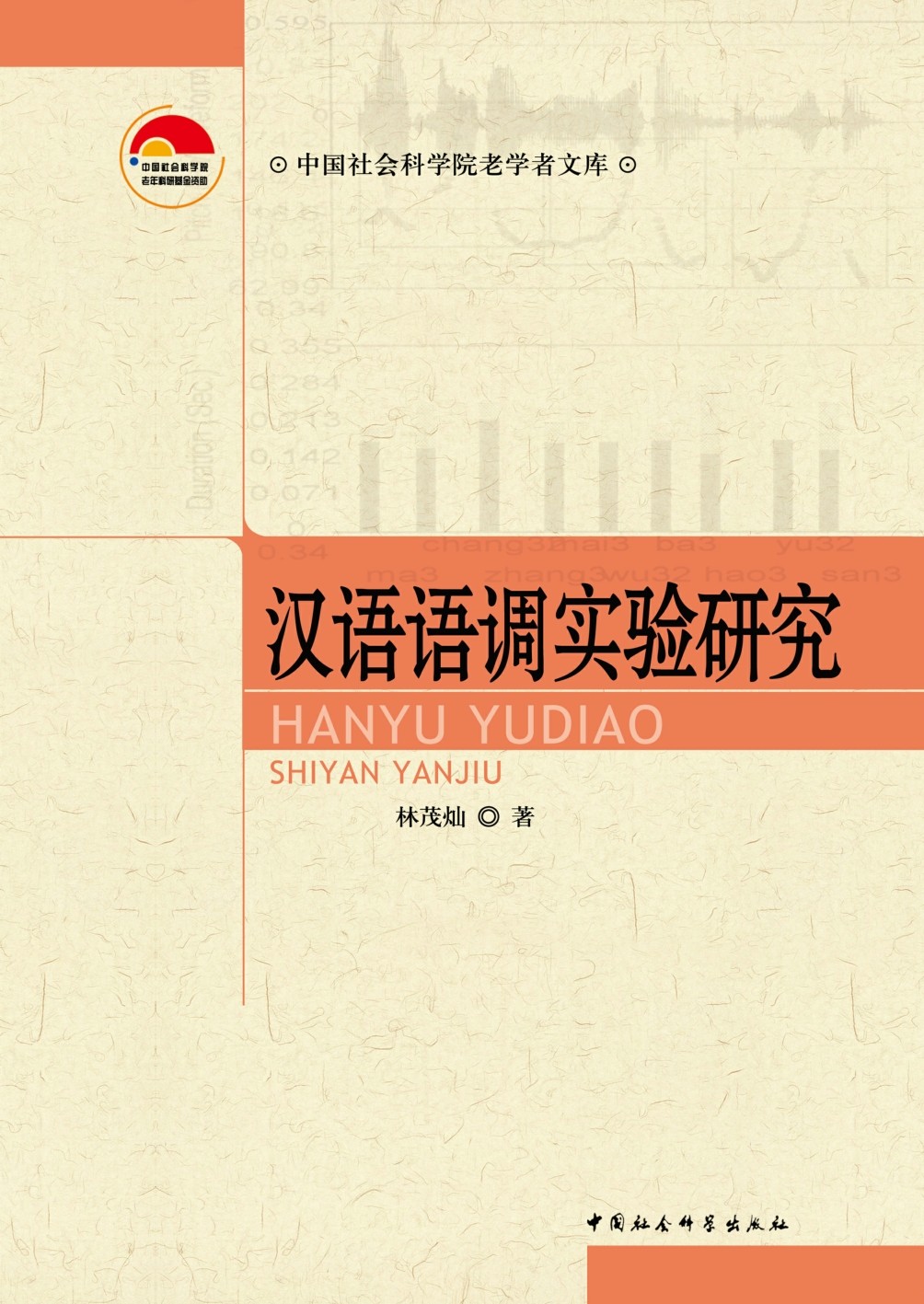
普通话焦点的语音实现和音系分析
Phonetic Realization and Phonological Analysis of Focus in Standard Chinese
纸书售价: ¥50.0 纸书定价:¥50.0
-
作者: 贾媛责任编辑: 张林出版时间: 2012-10-01ISBN: 978-7-5161-1699-9字数: 273千字浏览人数: 299次所属丛书: 中国社会科学院文库·文学语言研究系列所属分类: 语言、文字 > 汉语 > 语音 > 现代语音
内容简介
作者简介
目录
Contents
Chapter One Introduction
1.1 Introduction
1.2 Literature review
1.2.1 Intonational phonology
1.2.2 Prosodic phonology
1.2.2.1 Syntax-phonology mapping
1.2.2.2 Prosodic domains
1.2.2.3 Properties of prosodic structure
1.2.3 Focus
1.2.3.1 Focus from three different angles
1.2.3.2 Focus in phonetic approach
1.2.3.3 Focus in phonological approach
1.3 Significance of the research
1.4 Basic concepts in this study
1.4.1 Definition of focus
1.4.2 Nuclear accent and pre-nuclear accent
1.4.3 Relative prominence
1.5 Outline of this research
Chapter Two Methodology
2.1 Background and claims
2.2 Design of acoustic experiment
2.2.1 Materials selection
2.2.2 Syntactic structure of target sentence
2.2.2.1 Unmarked structure
2.2.2.2 Lian…dou structure
2.2.2.3 Shi…de structure
2.2.3 Focus identification
2.2.3.1 Focus in unmarked structure
2.2.3.2 Focus conditions in the lian…dou structure
2.2.3.3 Focus conditions in the shi…de structure
2.3 Recording procedure
2.4 Data processing
2.4.1 Data annotation
2.4.2 Data extraction
2.5 Measurement of parameters
2.5.1 Measurement of F_0
2.5.2 Measurement of Duration
2.6 Perceptual experiment
2.6.1 Aim of the perceptual experiment
2.6.2 Stimuli selection
2.6.3 Procedure
Chapter Three Phonetic Realization of Accent Patterns in Unmarked Structure
3.1 Introduction
3.2 Phonetic realization of constituents in four information categories in unmarked structure
3.2.1 F_0 contour of tone1 utterances in four information categories
3.2.1.1 Overall F_0 contour
3.2.1.2 Statistical analysis
3.2.2 F_0 contour of tone2 utterances in four information categories
3.2.2.1 Overall F_0 contour
3.2.2.2 Statistical analysis
3.2.3 F_0 contour of tone4 utterances in four information categories
3.2.3.1 Overall F_0 contour
3.2.3.2 Statistical analysis
3.2.4 Durational patterns of constituents in four information categories
3.2.4.1 Duration of subject constituents
3.2.4.2 Duration of object constituents
3.2.5 Summary
3.3 Phonetic realization of double rheme focuses
3.3.1 F_0 contour of tone2 utterances in double rheme focuses
3.3.2 F_0 contour of tone4 utterances in double rheme focuses
3.3.3 Duration patterns of words in double rheme focuses
3.3.3.1 Duration patterns of subject constituents
3.3.3.2 Duration patterns of object constituents
3.3.4 Summary
3.4 Phonetic realization of multiple rheme focuses
3.4.1 F_0 patterns of rheme focus on “S+Ad+O” and “S+V+O”
3.4.2 F_0 patterns of rheme focus on “Ad+V+O”and “S+Ad+V”
3.4.3 Summary
3.5 Accent and phrasing
3.5.1 Duration of pauses
3.5.2 Lengthening
3.5.3 Prosodic labeling
3.6 Discussion
Chapter Four Accent Patterns in ‘lian…dou’ and ‘shi…de’ Constructions
4.1 Introduction
4.2 Co-existences and conflicts of syntax-marked focus and information induced focus in ‘lian+S+dou+V+O+Le’ and ‘Shi+S+V+O+De’ constructions
4.2.1 Phonetic realization of syntax-marked focus
4.2.1.1 Overall F_0 contour of syntax-marked focus
4.2.1.2 Durational lengthening of syntax-marked focus
4.2.1.3 Summary
4.2.2 Addition of the syntax-marked focus with the rheme focus on the same constituent
4.2.2.1 Overall F_0 contour of additive focus
4.2.2.2 Durational lengthening induced by additive focus
4.2.2.3 Summary
4.2.3 Co-existence of two different kinds of focuses on different constituents
4.2.3.1 Overall F_0 contour of two different kinds of focuses
4.2.3.2 Durational lengthening of two different kinds of focuses
4.2.3.3 Summary
4.2.4 Interaction of addition of syntax-marked focus and rheme focus with rheme focus
4.2.4.1 Overall F_0 patterns
4.2.4.2 Duration patterns
4.2.4.3 Summary
4.2.5 Prosodic phrasing of the ‘lian+S+dou+V+O+Le’ construction
4.2.5.1 Durational distribution of pauses
4.2.5.2 Lengthening
4.2.5.3 Prosodic boundary labeling
4.2.5.4 Summary
4.3 Co-existence and conflict of syntax-marked focus and information induced focus in ‘S+lian+O+dou+V+le’ constructions
4.3.1 F_0 contour of rhematic focus constituent after lian-marked focus
4.3.2 F_0 contour of rhematic focus constituent before lian-marked focus
4.3.3 F_0 contour of rhematic focus and addition of lian-marked focus and rhematic focus in one sentence
4.3.4 Mean duration among the words in various focus conditions
4.3.4.1 Duration patterns of subject constituents
4.3.4.2 Duration patterns of object constituents
4.3.5 Summary
4.4 Discussion
Chapter Five Phonological Representation of Accent Patterns in SC
5.1 Introduction
5.2 Phonological structure of intonation
5.2.1 The IPO theory of intonational structure
5.2.1.1 Basic assumptions of IPO
5.2.1.2 Phonetic realization
5.2.2 Pierrehumbert’s model of tonal structure
5.2.2.1 The original model
5.2.2.2 Pitch accents
5.2.2.3 Phrase accents
5.2.2.4 Boundary tones
5.2.2.5 Framework
5.2.2.6 Modifications to the original framework
5.2.3 ToBI labeling system
5.2.3.1 Tiers in ToBI
5.2.3.2 Accent inventory in ToBI
5.2.4 IViE labeling system
5.2.4.1 Tiers in IViE
5.2.4.2 Accent inventory in IViE
5.2.5 Ladd’s notation of tonal structure
5.2.5.1 Types of pitch accents
5.2.5.2 Post-nuclear accents
5.2.6 Gussenhoven’s representation of tonal structure
5.2.6.1 Nuclear contours and boundary tones
5.2.6.2 Pre-nuclear pitch accents
5.2.6.3 Onsets
5.2.6.4 Expanding the tonal grammar
5.3 Intonation structure of SC
5.3.1 Autosegmetal representation of tone
5.3.2 Phonological pattern of intonation structure in SC
5.3.2.1 Types of phonological events
5.3.2.2 Phonological pattern of accents
5.3.3 Hierarchical structure of accents
5.3.4 Underlying causes for restricting the distribution of accents
5.3.4.1 Focus without accents
5.3.4.2 Accents without focus
5.3.4.3 A metrical account of accent distribution
5.4 Discussion
Chapter Six OT Analysis of Tonal Structure
6.1 Introduction
6.2 Grammatical model of OT
6.3 Constraints in the analysis
6.3.1 Markedness constraints
6.3.2 Faithfulness constraints
6.3.3 Association constraints
6.3.4 Alignment constraints
6.4 OT analysis of accent patterns
6.4.1 Generation of H* tone
6.4.2 Generation of L* tone
6.4.3 Generation of LH* tone
6.4.4 Generation of H*L tone
6.5 OT analysis of accent distributions
6.5.1 Accent on subject position
6.5.2 Accent on object position
6.5.3 Accents on subject and object positions
6.6 OT analysis of prosodic phrasing
6.7 Discussion
Chapter Seven Concluding Remarks
7.1 Major findings
7.2 The cross-linguistic perspective
7.3 Suggestions for future research
Bibliography
Appendix Sample Sentences
版权所有:中国社会科学出版社 备案序号: 京ICP备05032912号-1 地址:北京西城区鼓楼西大街甲158号 邮编:100720





